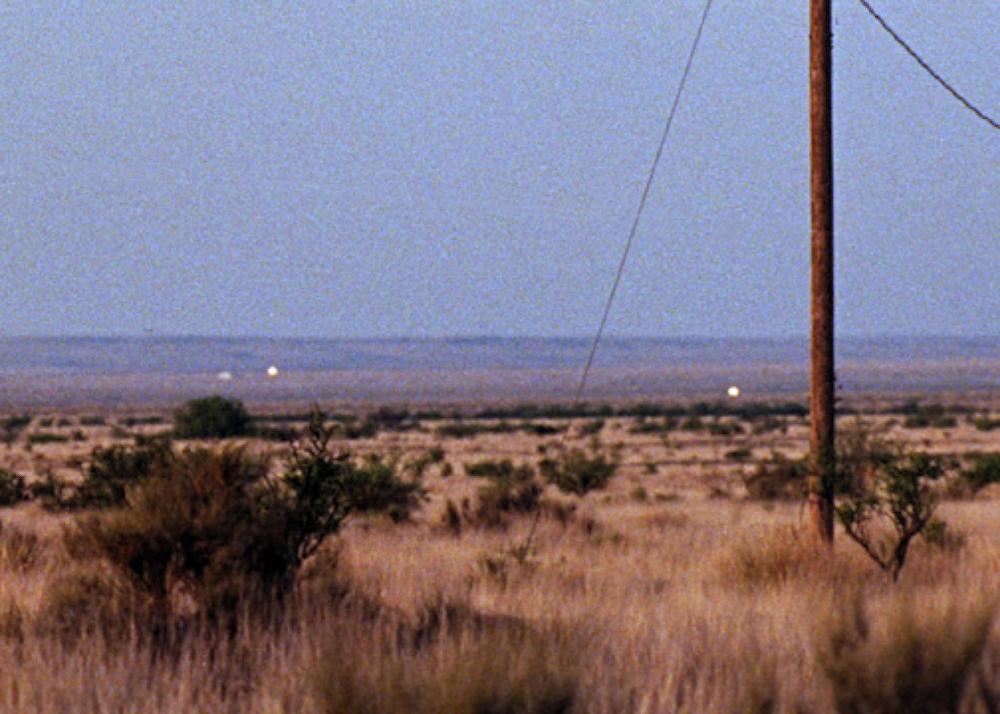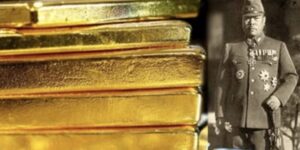There’s something spooky happening way out in the desert, on the outskirts of a dusty West Texas town known as Marfa. Since the late 1800s, folks have noticed strange lights flickering on the horizon — lights that can’t easily be rationalized as campfires, lanterns, car headlights, reflected moonlight, or any other simple explanation.
The truth probably lies in complex atmospheric phenomena, but that hasn’t stopped the town of Marfa (population: just shy of 2,000 souls) from embracing the weirdness. As a former resident of West Texas, trust this journalist when he tells you this — out there in the high desert, you’ll take any entertainment you can get your hands on.
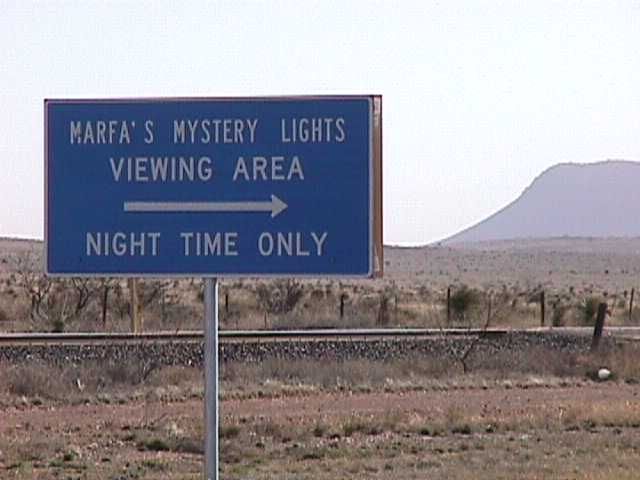
Photo: Texas State Historical Association
The Marfa Lights: early accounts
The Marfa Lights present as glowing orbs, sometimes slightly colored, that twinkle, split, move, merge, and then vanish altogether. They manifest at night between Marfa and Paisano Passes in the valley below West Texas’ low and umber Chinati Mountains.
According to the Texas State Historical Association, the first known accounts of the Marfa Lights spring from a young cowpoke named Robert Reed Ellison. The cowboy was working cattle through Paisano Pass when he caught a glimpse of the lights. He went to investigate, thinking they might be Apache campfires. Neither Ellison nor local settlers found traces of a campfire, however.
The Apache people were famously crafty desert travelers, so if the legend stopped there, we could just assume Ellison and his friends weren’t astute enough to discover the campfires. But accounts of the lights continued popping up.
No good explanation
Local couple Joe and Sally Humphreys also noticed the lights in 1885, again with no good explanation for their cause.
And people have been seeing them ever since. During World War 1, locals worried the lights might be signals foretelling a possible German invasion up through Mexico. During World War II, trainee pilots from a nearby Air Force base scouted the passes from the air, searching for a source in vain.
Of course, in the grand Texan tradition, it can be hard to separate the truth from tall tales. Mrs. W. T. Giddings, a Marfa local, grew up observing the lights. Her father claimed the phenomena saved his life when they led him to the shelter of a cave during a rare West Texas blizzard.
Likely? Probably not. But it makes a good story — once which Marfa has capitalized on in recent years. It won’t surprise any student of American culture to know that Marfa has a yearly festival celebrating the lights, one that attracts lovers of mystery from all over the globe.
A surprising resurrection
Marfa sprang up as a water stop along the railroad in the 1880s. Once steam locomotives went the way of the dinosaurs, the town went into decline. But in the 1970s, a minimalist art scene surprisingly took hold, and now the dusty little settlement attracts modern art lovers from all over the world.
One of the more bizarre installations is a freestanding building designed to look like a Prada store, sitting one scant mile outside of town.
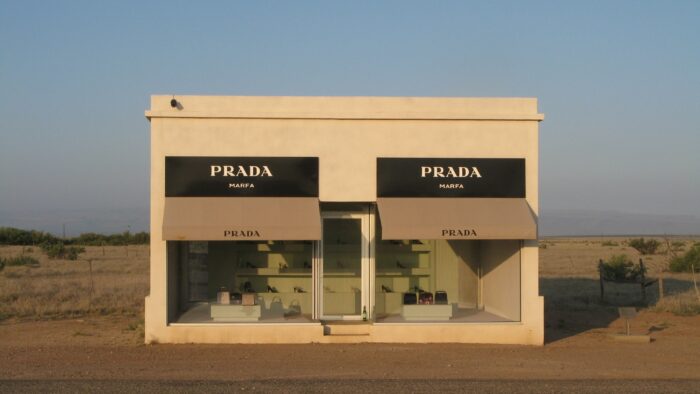
The Marfa Prada store is actually a piece of modern art. Photo: Wikimedia Commons
A thriving cultural scene is all well and good, but it’s Marfa’s original attraction — those flickering lights — that still has a hold on the imagination of a certain type of road-tripping American. In 2002, the town built a Marfa Lights viewing area on the side of the highway, complete with the type of low, red illumination normally seen in dark sky parks.
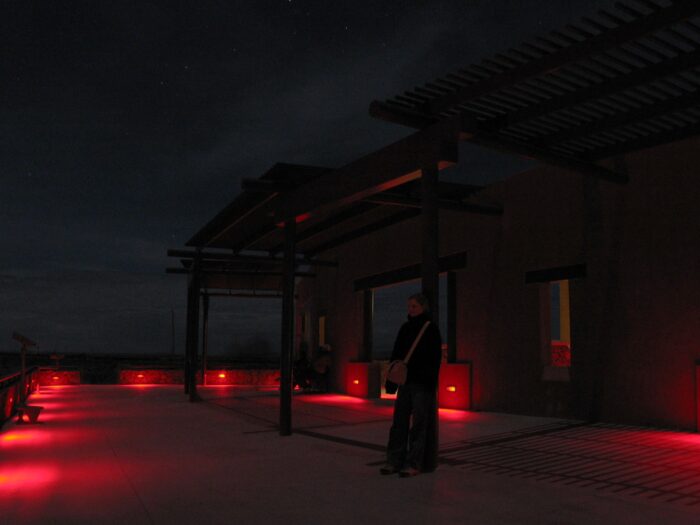
The Marfa Lights viewing platform. Photo: Wikimedia Commons
Possible explanations
The easiest way to explain the Marfa Lights (other than Apache campfires) is as headlights from passing vehicles traveling on a nearby highway. In 2004, students from the University of Texas at Dallas spent four days observing the lights and proved that the phenomena they witnessed were indeed the result of passing cars.
In 2008, another group from the University of Texas captured the lights using spectroscopic instrumentation over a 20-night period and reached the same conclusion.
But 20 nights in the desert is a tiny slice of the Lights’ hundred-plus-year history. And the trouble with this explanation is that it doesn’t account for the fact that the Marfa Lights were first observed long before cars made it to that part of West Texas.
Internet debunker Brian Dunning thinks he has an answer that reconciles the issue. In a podcast published in 2007, Dunning points out that there aren’t any primary written sources confirming the early accounts of Ellison and others — just the second-hand stories of Ellison’s descendants from a period that post-dates automobiles.
The lights’ strange behavior is unsatisfying, but it probably boils down to the same science that explains fairy lights around the world: atmospheric distortion.
Dunning posits that headlights from cars are being distorted by an effect known as a “superior mirage,” where temperature differences in layers of the atmosphere caused by Marfa’s climate and elevation (1,427m) can make images appear to hover above the horizon.
The lack of primary historical evidence combined with a modern understanding of physics and weather science is enough explanation for most skeptics.
Room for wonder
But other minds, just as bright, offer different takes — and uncertainty. Retired aerospace engineer James Bunnell told the Houston Chronicle he thinks the Lights result from piezoelectric charges produced by minerals just under the desert surface.
Meanwhile, Texas State University engineering professor Karl Stephen told the paper that he was unable to explain the phenomenon.
“It may be geological activity that creates electrical activity, but it’s all speculation at this point,” Stephan said. “There are no proven facts.”
That’s good news for those who appreciate sweet, chocolatey chunks of mystery liberally sprinkled into the pancake batter of our hard science.
So, if you ever happen to be traveling through West Texas, consider a detour to Marfa to get some eyeballs on the Lights. You won’t regret it — particularly as it’s virtually the only thing to do for hundreds of miles in any direction.
